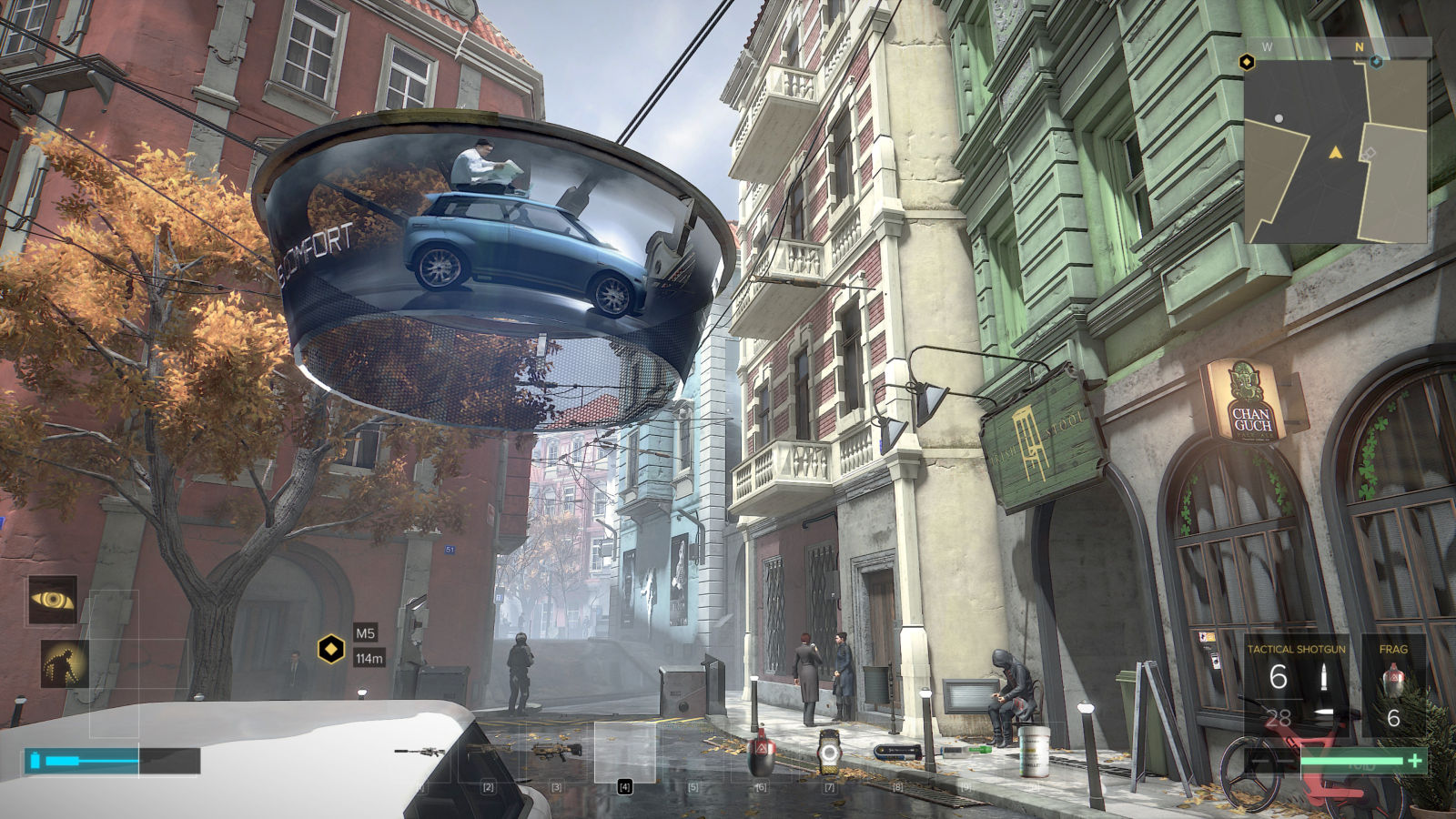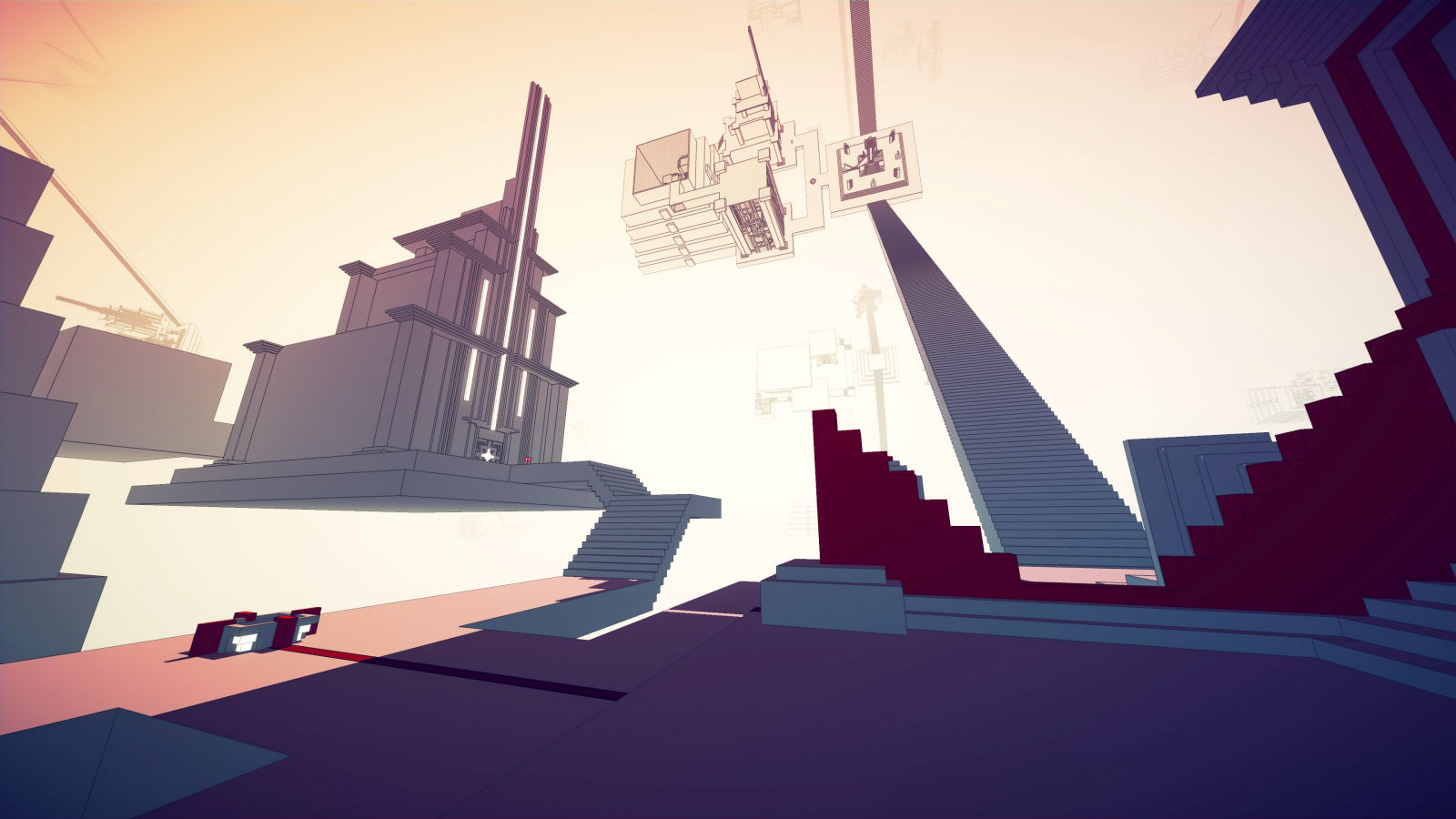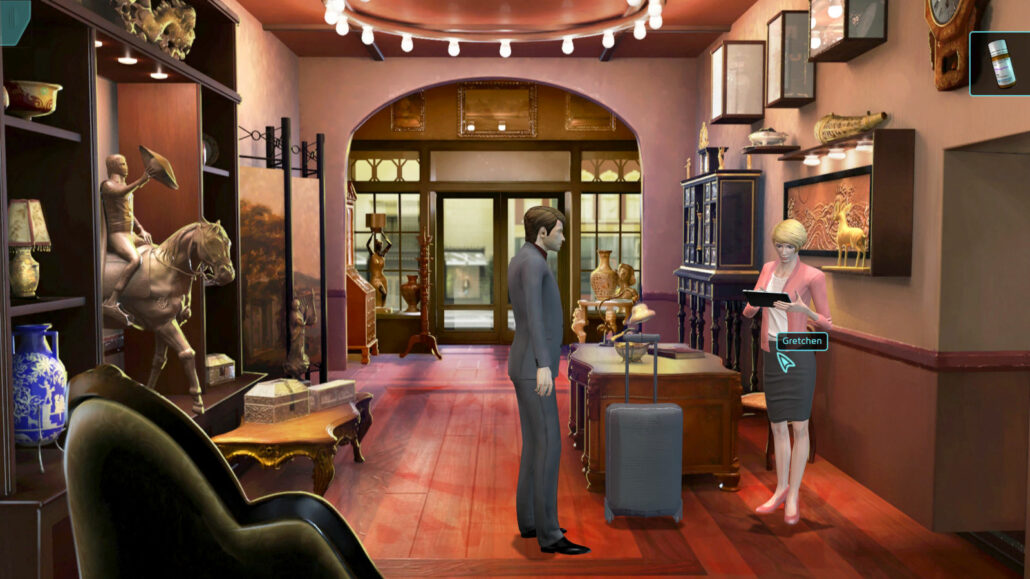This is another post in my series about the odd games that I have decided not to complete, although I will at least try them out for up to an hour or two.
Category: PC Games
About PC games in general.
Sable
Developer: Shedworks | Released: 2021 | Genre: 3PS, Adventure
This relatively fresh third person adventure game had a really stylish drawn style that reminded me a lot of European graphic novels, particularly those by Moebius.
In fact, that was the reason I got interested in it.
I controlled a teenager coming of age as she achieved the ability the float slowly downwards, which came in handy when climbing things and jumping across long distances. I was given a hover bike to navigate the big desert, looking for points of interest to explore. There was no combat of any kind, but RPG-style quests.

And it wasn’t just quests about obtaining a specific object or finishing some kind of collection quest. Some of the later quests involved the trope investigation chain and even breaking someone out of jail.
Eastshade
Developer: Eastshade Studios | Released: 2019 | Genre: Adventure, Paint
In my backlog at GameDeed.com, I described this game as a peaceful open world exploration-adventure. It was pretty apt. As a mute protagonist I was washed ashore in a landscape with a town and a city, populated by affable humanoids with animal heads. Apes, owls, bears, deer.
The protagonist was a skilled painter and thus the overall goal was to get quests and commissions for naturalistic painting. There were also a lot of side quests of almost any kind, crafting, fishing, and even a little touch of survival thrown in for good measure. The open world was big enough to warrant many hours of exploration, yet it was also small enough that I could run from one end to another in a few minutes.
To put is shortly, it felt a lot like a lighthearted first person Elder Scrolls game without the combat.

The first town Lyndow was just a few houses. Most quests earned glowstones which was the currency in the game. A nice deviation was when a completed quest taught me how to craft something new. The user interface for crafting and keeping track of quests was logical and easy to use. By far the most used crafting option was of course combining boards and fabric to create a canvas for painting.
Walking around, meeting people in the world and doing various quests for them, felt good and relaxing, and the game was certainly commendable in that regard. If anything, it was a little too lighthearted a times, particularly in the beginning where it felt like a game for kids. This does ease off later, but sometimes I was also missing a bit of combat to spice things up.
I never thought I would ever see myself type that sentence.
Maybe that yearning for combat was because of how much the game looked like an open world RPG with all combat stripped out, rather than casual exploration closely related to pure adventure games.
Deus Ex: Mankind Divided
Developer: Eidos Montreal | Released: 2016 | Genre: FPS+, Stealth
I absolutely loved the original Deus Ex. In fact, I loved it so much that I completed it twice, and I virtually never do that. It was a 10 to me. I also completed the sequel, as well as Deus Ex: Human Revolution. I really liked this reboot too when I completed it back in 2012. I gave that one a 9.
Yet, I almost abandoned Mankind Divided.
I started it one morning where I probably was in a sour mood. It felt overwhelming with its many wheels, panels and windows. I decided I couldn’t muster this level of complexity anymore and dumped it. But after lunch (and in a better mood) I gave it a second chance. And this time it grabbed me.
Did I just repeat the same rebound as with Call of Duty 4: Modern Warfare?

I’m really glad I gave it one more go – it was really fun to explore Prague. It was wonderfully detailed and it was teeming with opportunities for exploring, sneaking, shopping and side quests.
Short Sessions, Part 14
This is another post in my series about the odd games that I have decided not to complete, although I will at least try them out for up to an hour or two.
Manifold Garden
Developer: William Chyr Studio | Released: 2019 | Genre: Puzzle, First Person
Do you know the feeling in a FPS or a first person puzzle game when you suddenly walk into an exceptional open space with enormous structures disappearing into the horizon, and you stop for a moment to take in the awe inspiring vista? This game not only takes that to another level, it does it virtually all the time.
The game reminded me of both Antichamber and Fez, both games I also completed. Antichamber mostly because of the graphical style, and Fez because of placing cubes at the end of levels for great effect. But the game was definitely its own. It supposedly took William Chyr 7 years to make it, and it’s understandable. Apart from the tech itself, just creating those infinite levels must have been a daunting task.

The game was a mixture of solving local puzzles and navigating infinite levels that wrap into themselves like a lithograph by Escher, repeating its structures as you fall through it. The direction of gravity changes when walking up to a wall and pressing space. Now the entire level tilts around, turning walls into floors. Falling not only doesn’t kill you, it’s often necessary to navigate the enormous levels since you can’t jump.
See that ledge over there? Drop down for a while until the level repeats itself, then steer towards the ledge as it approaches again and land. The sound of wind and a fear of heights still makes it feel dangerous.
My Time with IO Interactive
Did you know I was once employed in IO Interactive, the creators of the Hitman series of games?
It was Ole Mogensen who got in contact with me in the end of October 2014 and offered a time limited job as a consultant. Ole is the older brother of Thomas Mogensen, whom had been part of my C64 music group Vibrants as Drax. So it was definitely a network thing. Ole was a producer at IO Interactive, and here the animators wanted to organize a database with animation assets.
Work in the video games business with people I knew? Definitely interested!
The company was located opposite Islands Brygge, not far from Dybbølsbro, which was pretty much right in the center of Copenhagen. Commuting would take less than an hour for me. I was unemployed at the time and had recently had quite a few uncomfortable job interviews, but I had a good feeling about this one. The guys I spoke with seemed much closer to me in spirit. One one them was the animation lead, Kenn. He was from America and thus the job interview had to be in English. My job would be to gather information about animation assets from the animators and put it in a Jira database.
I started in November 2014. The building was a tall and modern building with four floors and an big, open central shaft. It reminded me of Scala, a shopping center in Copenhagen that has been demolished years ago by now. I was shown around and greeted people. Almost all of them were nerdy to a certain degree. They also came from all around the world, not just Europe. That also meant that most of the talking at IO Interactive was in English. Apart from Ole, I didn’t know most of these guys.
The First Three Hitman Games
As preparation for playing a couple of modern Hitman games in the near future, I’ve decided to transfer my diary sessions of the three first Hitman games which I completed about 20 years ago. This is part of a nostalgic series of the games I played many years ago, but this time it will be adaptations rather than direct transcriptions.
There will be spoilers in these diary sessions.
Hitman: Codename 47
Developer: Io-Interactive | Released: 2000 | Genre: 3PS, Stealth
I completed this game in February 2002. I hesitated before starting it as I had heard it was supposedly very hard, and it was true. The game often had long and complicated missions with no in-game saving of any kind, and it was generally merciless. One mistake and all hell could break lose.
The game was quite original at the time. I had not seen anything quite like it before. Instead of going in guns blazing or just camping with a sniper rifle, I had to research the surroundings of the levels, learn some of the hints for bypassing security and preparing the assassination, then orchestrate an ingenious way of killing the target. And preferably without being detected.

It was a great idea in theory and the game series have always had its stalwart fans. I was never one of them. I quickly disliked the way these games required me to constantly restart and research the same missions over and over, until it was possible to complete it with as little commotion as possible. I never liked having to repeatedly sit through the same sequence in a game, and this game did that in abundance.
Nevertheless, I just had to try out the game. It was the first really big game produced in Denmark, my home country, and it had music by Jesper Kyd, whom I had briefly met at an Amiga demo party. His music was often a bit too minimalistic for my taste, but it was good in this game. It fit nicely.
Moebius: Empire Rising
Developer: Pinkerton Road Studio | Released: 2014 | Genre: Adventure, Point & Click
I’ve completed the three Gabriel Knight games many years ago and gained a solid respect for Jane Jensen’s writing. That’s also why I backed the Kickstarter campaign for it in 2013. However, since its release it has received a mixed bag of reviews and it always had me avoid it in the Steam backlog.
Until now. And I confess that once again, it was originally my intention to play it for an hour or so and then dump it into my series about Short Sessions. The 3D models was not exactly doing it any favors.

But in spite of the mediocre walking animation, lip sync and those crazy eyeballs of persons trying to look behind their own ears, the story and the analyzing puzzles quickly grabbed me.
The protagonist, Malachi Rector, was a Sherlock Holmes kind of guy with a very high IQ. As an expert in antiquities with a photographic memory, he was sometimes hired to evaluate new antique findings, which he then ruthlessly declared to be trash. In spite of his elegant demeanor, he was sometimes belittling requests and sarcastically denounced objects around him. And he was regularly taking pills.
I immediately liked him.
Perspective
Developer: Widdershins | Released: 2012 | Genre: Platform, Puzzle
Cute little puzzle platformer that only took me 1½ hours to get through. It’s free on Steam. User reviewers there claim it took them an hour or less to get through it. I also admit I was almost stuck a few times, but eventually I always figured it out. But take heed – this is no walk in the park.

The gimmick in this one was controlling the perspective for a 2D space guy. I switched between 3D mode for adjusting the perspective in first person, like lining up platforms close to each other, then switched back to controlling the space guy for jumping across. There were blue graphics for walking and jumping on, while all orange graphics killed the space guy if touched.










